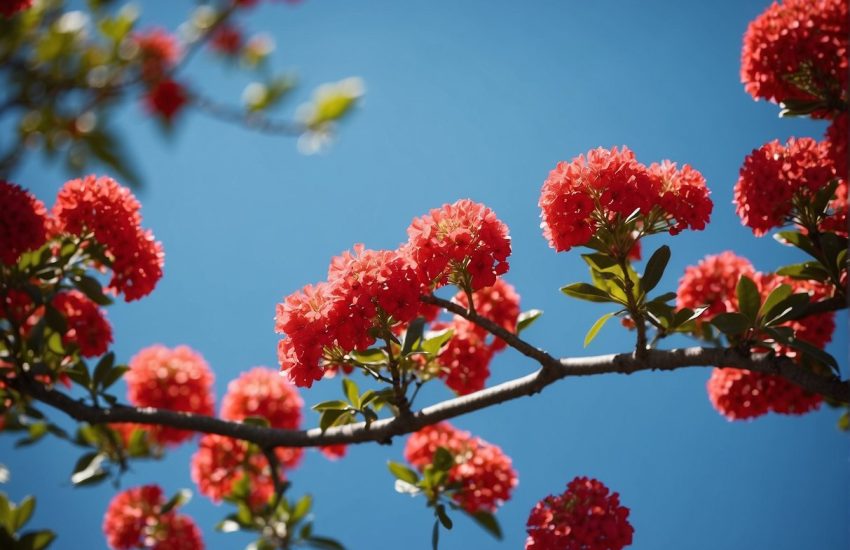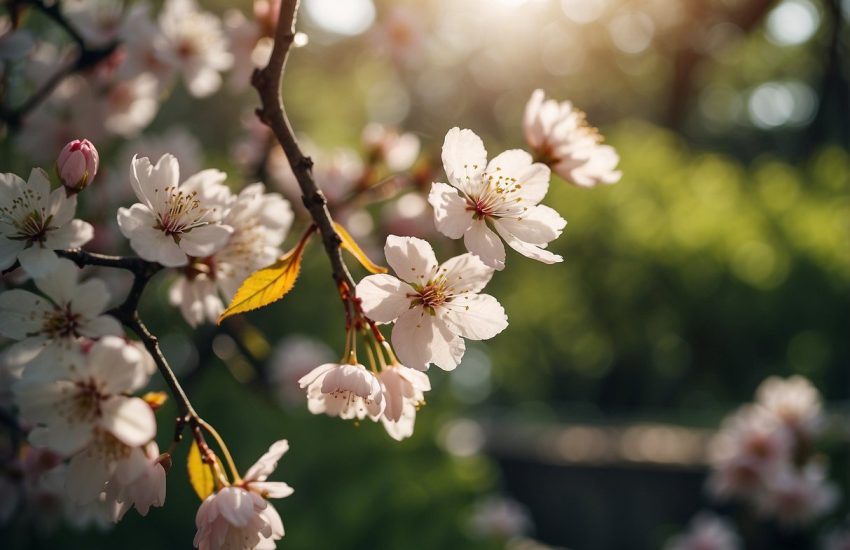Pink Flowering Trees in Colorado: A Guide to the Best Varieties for Your Garden
Pink flowering trees are a beautiful sight to behold in Colorado. These trees add a touch of color to the landscape and are a popular choice for homeowners and landscapers alike. Colorado’s climate and soil conditions make it an ideal place for many types of flowering trees, including those with pink blossoms.

One of the most popular pink flowering trees in Colorado is the cherry blossom tree. These trees are known for their delicate pink blooms that cover the branches in the springtime. Cherry blossom trees are a symbol of renewal and are a favorite among photographers and nature lovers. They are also a popular choice for planting along streets and in public spaces.
Another popular pink flowering tree in Colorado is the dogwood tree. These trees produce clusters of pink flowers in the springtime and are known for their attractive bark and foliage. Dogwood trees are also a favorite among bird watchers, as they attract a variety of birds to their branches. Whether you are a homeowner looking to add some color to your yard or a nature lover looking for a beautiful sight, pink flowering trees in Colorado are sure to impress.
Popular Pink Flowering Trees in Colorado

Colorado’s landscape is adorned with a variety of pink flowering trees that add a splash of color to the spring season. These ornamental trees not only beautify the landscape but also provide a habitat for wildlife, including birds, butterflies, and pollinators. Here are some of the most popular pink flowering trees in Colorado.
Eastern Redbud (Cercis Canadensis)
The Eastern Redbud is a deciduous tree that is native to eastern North America and is widely grown in Colorado. It is known for its stunning pink blooms that appear in early spring before the leaves emerge. The tree grows up to 30 feet tall and has heart-shaped leaves that turn yellow in autumn. The Eastern Redbud is a great addition to any landscape and is often used as a specimen tree or in group plantings.
Crabapple Trees
Crabapple trees are known for their profuse spring blooms that range in color from white to deep pink. They are a popular ornamental tree in Colorado due to their hardiness and adaptability to various soil types. Crabapple trees come in a range of sizes, from dwarf varieties that grow up to 10 feet tall to larger trees that can reach up to 30 feet in height. They are also a great source of food for wildlife, including birds and small mammals.
Kwanzan Cherry
The Kwanzan Cherry is a popular ornamental tree that is known for its stunning double-pink flowers that bloom in late spring. The tree grows up to 30 feet tall and has a spreading canopy that provides ample shade in the summer months. The Kwanzan Cherry is a great addition to any landscape and is often used as a specimen tree or in group plantings.
Flowering Dogwood (Cornus Kousa)
The Flowering Dogwood is a small deciduous tree that is known for its showy pink or white flowers that bloom in late spring. The tree grows up to 30 feet tall and has a spreading canopy that provides ample shade in the summer months. The Flowering Dogwood is a great addition to any landscape and is often used as a specimen tree or in group plantings.
In conclusion, these pink flowering trees are a great way to add color and interest to any landscape in Colorado. They are not only beautiful but also provide a habitat for wildlife and pollinators. Whether you are looking for a specimen tree or a tree for group plantings, these pink flowering trees are sure to impress.
Caring for Pink Flowering Trees

Pink flowering trees are a beautiful addition to any garden or landscape, but they do require some care to thrive in Colorado’s climate. Here are some tips for caring for your pink flowering trees:
Soil and Water Requirements
Pink flowering trees prefer well-draining soil that is rich in organic matter. They also require regular watering, especially during the hot and dry summer months. However, it is important not to overwater them as this can lead to root rot.
Pruning and Maintenance
Pruning is important for maintaining the shape and health of your pink flowering trees. It is best to prune them in late winter or early spring before new growth appears. This will help to promote healthy growth and prevent disease. Regular maintenance such as removing dead or diseased branches can also help to keep your trees healthy.
Pests and Diseases
Pink flowering trees are generally not prone to pests or diseases, but it is important to keep an eye out for any signs of trouble. Some common pests that can affect pink flowering trees include aphids, scale insects, and spider mites. Diseases such as powdery mildew and leaf spot can also be a problem. If you notice any signs of pests or diseases, it is best to take action quickly to prevent further damage.
In conclusion, caring for your pink flowering trees in Colorado requires attention to soil and water requirements, pruning and maintenance, and keeping an eye out for pests and diseases. By following these tips, you can enjoy the beauty of these trees in your garden or landscape for years to come.


